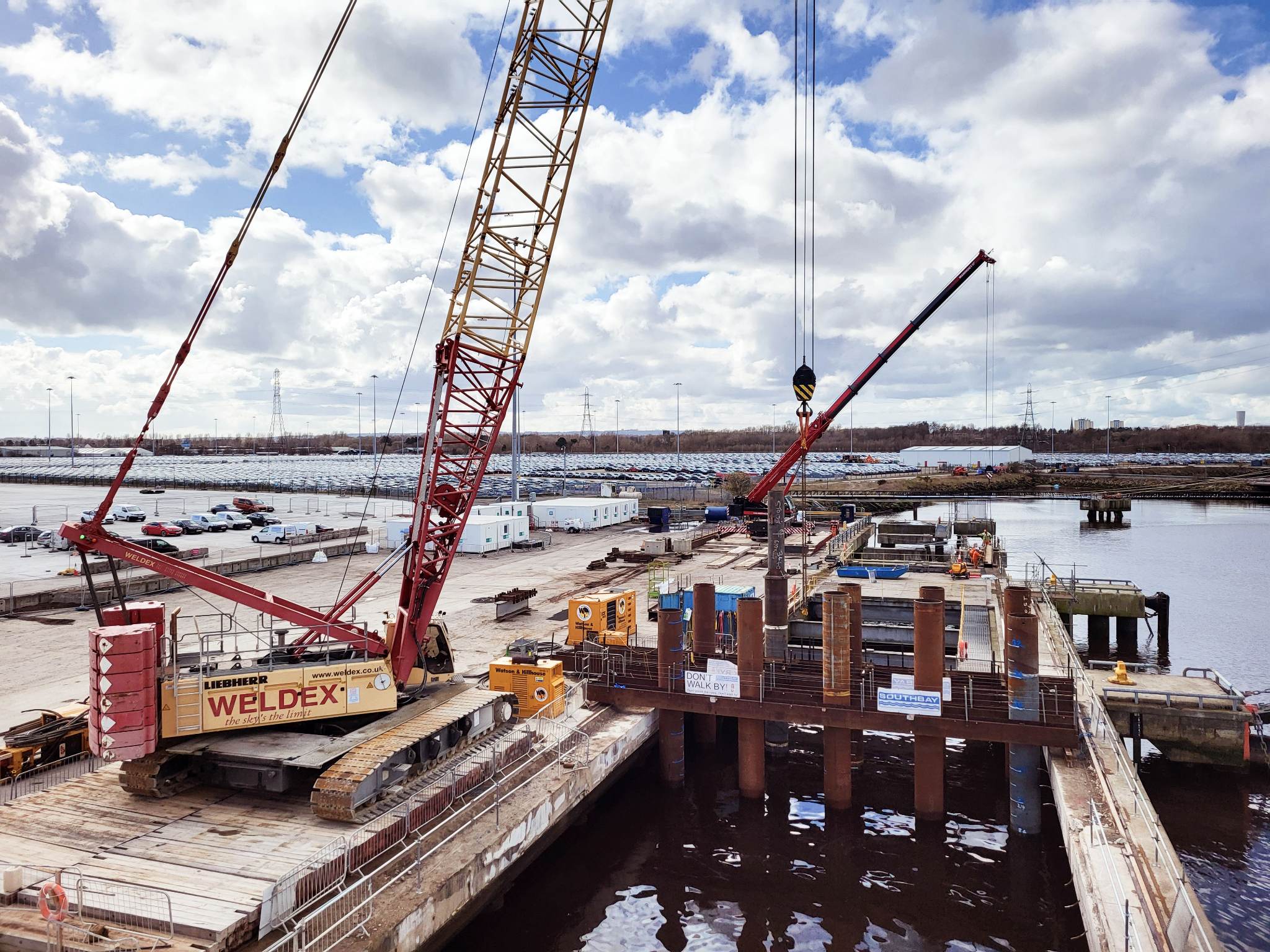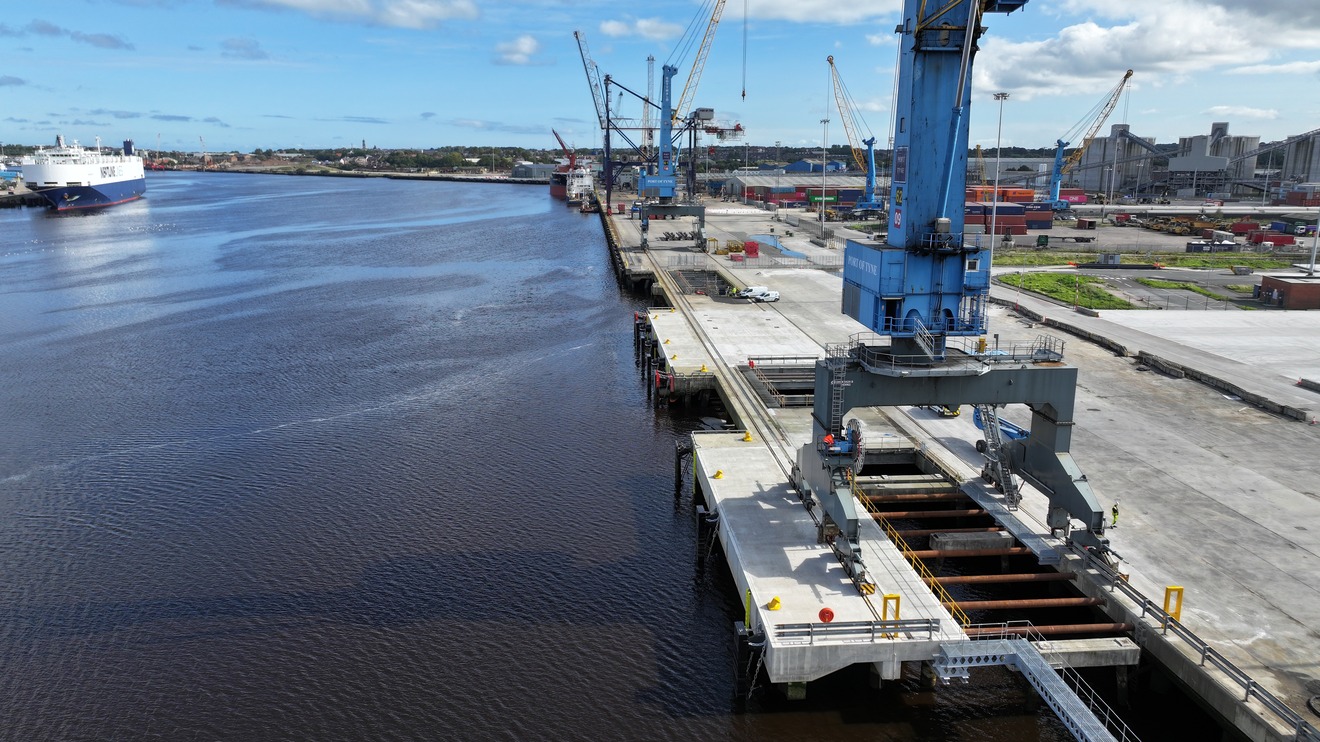Project details
This design and build contract involved upgrading the existing Tyne Bulk Terminal to enable the berthing and mooring of high-capacity vessels servicing the offshore renewable energy sector. Formerly used in the import / export of coal, the load capacity of the quay has been increased from 10T/m² to 20T/m². This involved extending two separate areas of the site by constructing 36m and 40m sections of suspended quay. The upgraded quayside will form part of the Tyne Clean Energy Park, one of the most versatile clean energy sites within the UK, providing development land with direct marine access.

In accordance with our clients challenging programme, construction of both quayside structures was progressed simultaneously. Initial works included the controlled demolition of an existing ship loading skeletal structure, and removal of several existing piles. A 250-tonne crawler crane was then used to install 73no 864mm diameter and 10no. 914mm diameter tubular bearing piles. A traditional piling gate was used to pitch the piles into position, before the pile was driven to refusal into underlying mudstone / sandstone using a vibro and impact hammer. All associated pre cast concrete beams, which were constructed onsite, were then installed. This allowed for the fixing of reinforcement prior to a series of in-situ concrete pours to form the deck slab. The deck slab was designed to include ducting and service pits. Further works included the installation of quayside furniture in the form of fendering, 100t mooring bollards, and access ladders. Supported by a specialist dive team, a cathodic protection system was installed to all exposed steelwork within the tidal zone. Operational infrastructure in the form of crane rails and panzer belt have also been installed.
The project was delivered within an operational port environment with significant consideration given to vessel movements, and the transportation of materials to site. The project was safely delivered, with an accident frequency rate of zero achieved upon completion. Our methodology was developed in accordance with various stipulations within the Marine Construction Licence to protect surrounding species, including soft start piling and mammal observation.






